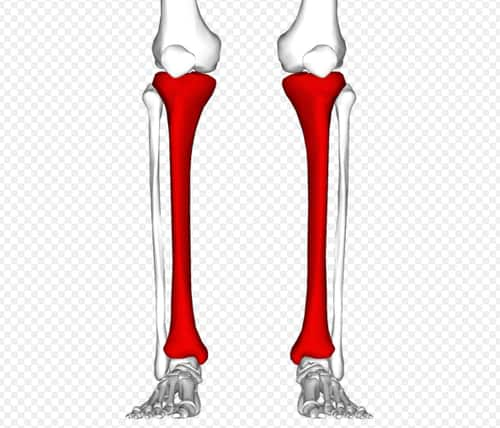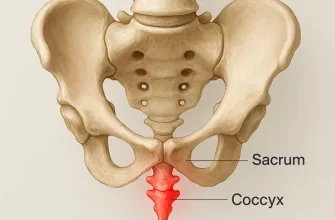As we go about our daily activities, a sudden twinge of pain can catch us off guard, leaving us puzzled and seeking answers. One such pain that often raises concern is the discomfort felt between the knee and shin. While it may be tempting to brush it off as a minor inconvenience, taking the time to understand its causes is crucial for pain management and overall well-being.
Shin Splints
Shin splints are a common cause of pain between the knee and shin, especially in individuals engaged in high-impact activities. They occur when the muscles and tendons around the shin bone become inflamed or overworked. High-intensity workouts, inadequate warm-up, improper footwear, and sudden increases in activity levels can all contribute to the development of shin splints.
Stress Fractures
Stress fractures, also known as hairline fractures, are tiny cracks in the bones that can result from repetitive stress or overuse injuries. These fractures are commonly seen in athletes and individuals involved in activities that place excessive strain on the lower leg. Persistent pain that worsens during activity, tenderness, and swelling are typical symptoms associated with stress fractures.
Patellofemoral Pain Syndrome
Also known as runner’s knee, patellofemoral pain syndrome is characterized by pain at the front of the knee. However, this pain can radiate down to the shin. It is often caused by factors such as muscle imbalances, improper tracking of the kneecap, changes in leg alignment, or excessive stress on the joint. Activities like running, jumping, or squatting tend to worsen the discomfort.
Compartment Syndrome
Compartment syndrome occurs when the pressure within the muscles and soft tissues within a confined space increases, leading to restricted blood flow and nerve function. This condition can cause pain, swelling, and throbbing sensations between the knee and shin. Acute compartment syndrome is considered a medical emergency, while chronic compartment syndrome is typically associated with repetitive motion activities.
Meniscal Tears
The menisci are C-shaped pieces of cartilage that provide stability to the knee joint. Injury or tears to the menisci can cause pain between the knee and shin. This injury may occur during sports activities that involve twisting or sudden changes in direction. Locking, popping, or clicking sensations within the knee joint, along with swelling and limited range of motion, can be indicative of a meniscal tear.
Seeking Medical Advice
If you are experiencing persistent or worsening pain, it is advisable to consult a medical professional. They can conduct a thorough examination, order diagnostic tests if necessary, and provide you with an accurate diagnosis and proper treatment options.
Treatment Options for the Pain Between the Knee and Shin
- Physical Therapy – Physical therapy is often the first line of treatment for pain between the knee and shin. A skilled therapist can develop a personalized exercise regimen to strengthen the surrounding muscles, improve flexibility, and correct any biomechanical imbalances that may be contributing to the pain. This can help alleviate discomfort and prevent further injury.
- R.I.C.E Method – The R.I.C.E method (Rest, Ice, Compression, and Elevation) is a simple and effective way to manage pain and reduce inflammation in the affected area. Resting allows the body to heal, while icing the area helps to decrease swelling and pain. Compression through bandages or braces can provide support and minimize discomfort. Elevating the leg can also help reduce swelling.
- Nonsteroidal Anti-Inflammatory Drugs (NSAIDs) – Over-the-counter NSAIDs like ibuprofen or naproxen can help alleviate pain and reduce inflammation. These medications work by blocking the production of certain chemicals in the body that cause pain and swelling.
- Corticosteroid Injections – In severe cases, a healthcare professional may recommend corticosteroid injections. These are administered directly into the painful area to reduce inflammation and provide temporary pain relief. However, it is important to note that repeated injections may have potential side effects, and this treatment should be closely monitored by a medical professional.
- Orthotic Devices – Custom-made orthotic devices, such as shoe inserts or braces, can be beneficial in treating pain between the knee and shin. They can help correct any alignment issues or biomechanical imbalances that may be contributing to the discomfort. Orthotics provide support and cushioning, reducing stress on the affected area.
- Shockwave Therapy – Shockwave therapy is a non-invasive treatment option that uses high-frequency sound waves to stimulate the healing process in the affected area. This therapy can help reduce pain and improve function. It is generally performed over several sessions and has shown promising results in relieving pain between the knee and shin.
- Surgery – In rare cases where conservative treatments fail to provide relief, surgery may be considered as a last resort. The type of surgery will depend on the underlying cause of the pain. Procedures such as arthroscopy or ligament reconstruction may be performed to address any structural abnormalities or repair damaged tissue.
Conclusion
Pain between the knee and shin can significantly hinder one’s daily activities and quality of life. By understanding the potential causes behind this discomfort, we equip ourselves with the knowledge needed to take appropriate measures for pain management and prevention. If injury or pain persists, consulting a healthcare professional is crucial to receive personalized guidance and treatment. Remember, taking care of our body is a long-term investment in our overall well-being.









